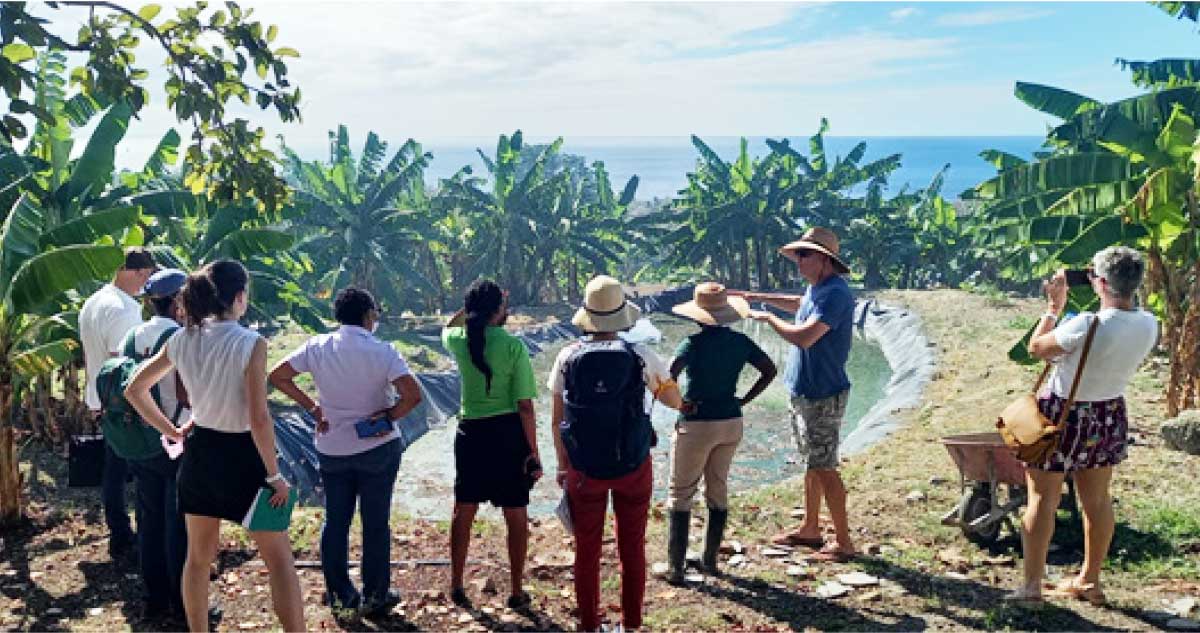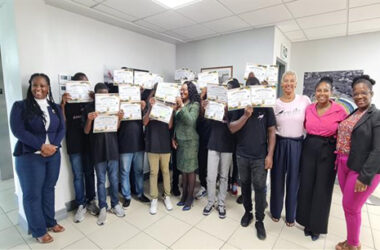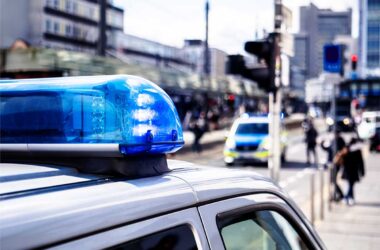Saint Lucia is one step closer to putting its wastewater to positive use following a visit by a team from neighboring Martinique that spent two days here meeting, greeting and visiting wetlands to strengthen related local knowledge and treatment capacity already in practice in the French islands and being shared with Caribbean neighbors.
The Caribbean Cooperation for Wastewater Treatment Inspired by Nature (CARIBSAN) is a regional project researching and training participants to develop technology for treatment of wetlands in Cuba, Dominica, Guadeloupe, Martinique and Saint Lucia.

It promotes wastewater treatment using wetlands cultivated with a popular Caribbean plant and after successful tests over yeas in Guadeloupe and Martinique, this effective nature-based solution is also simpler to construct and cheaper to build than a conventional wastewater system — and its resistant to the climatic events that usually impact the Caribbean.
The project was launched in September 2021 in Martinique with practical demonstrations at the Taupieniere treatment plant in Diamant.
Saint Lucia and the other participating states agreed to partner with the European sponsors to take the process (of using the widely-available Bird of Paradise plant to treat wastewater through natural intervention) further by identifying possible areas for application of the tried-and-tested means to reduce the unhealthy and environmentally harmful effects of untreated wastewater.
The team from Martinique represented France’s Office International de l’Eau (OiEau) (OiEau), Office De L’eau (ODE) Martinique and the National Research Institute for Agriculture, Food and the Environment (INRAE) of France and met here with officials of the Saint Lucia-based Caribbean Water and Sewage Association (CAWASA) and Saint Lucia’s Water and Sewage Company (WASCO).
The stakeholders shared experiences and ideas to finetune the search mission for ideal locations to treat wastewater naturally in hilly Saint Lucia, which, like most other Caribbean islands, experiences the uncontrolled discharge of wastewater into its ecosystems on land and sea.
The team, with WASCO and CAWASA technicians, also visited sites in Cul-de-Sac where community efforts at wastewater treatment have been tried unsuccessfully, to advise on most effective approaches.
But the combined team’s most practical engagement was a visit on January 26 to the Ti Kaye Resort, which has constructed a treatment plant that can very-well do with the technical advice on the natural approach to treatment of its wastewater.
The local resort, tucked-away from the Anse-la-Raye village miles inland near Anse Cochon, specializes in offering as much local and Caribbean products and services as possible, from producing its own food in gardens watered by treated water and fertilized with compost generated at the resort, to producing its own drinking water.
Ti Kaye’s Nick Pinnock and staff personally manage the treatment and composting plants at the resort, which uses 80,000 litres of water daily and employs Reverse Osmosis to produce potable water to an extent that it needs no WASCO supply lines.
The potable water is sourced from a well and treated through a Reverse Osmosis system and Ultraviolet (UV) lighting.
The resort’s system and processes are built and managed by the owner with storage capacity for a million litres of treated potable water and constructed wetland that treats its wastewater.
This nature-based solution helps prevent untreated wastewater from draining down the hillside property into the sea.
Following their site visits and discussions with private and public stakeholders here, the visiting Office International de l’Eau team returned to Martinique to process their findings and plan for the next engagement here.
Phase 1 of the planning aspect of the five-island project started in June 2021 and will continue until December 2022.
In September, the Infrastructure Ministry’s Permanent Secretary Ivor Daniel represented Infrastructure Minister Stephenson King during a tour of the Diamant treatment plant that was also featured online, during which Saint Lucia committed to take the next steps towards ensuring better treatment of wastewater.
Some wastewater here is treated by hotels and WASCO facilities, but there’s still much direct and indirect discharge into the sea, while local knowledge about this particular use of the widely-available Bird of Paradise plant is rare and the local, regional and European water officials are excited about bringing Saint Lucia into the loop.
The EUR 1.7 million CARIBSAN project is co-financed by the European Union (EU) through the INTERREG Caraibes programme, the French Development Agency (AFD) and the Water Offices (ODE) of Martinique and Guadeloupe.
CAWASA, which represents regional water utilities and entities, coordinated the visit.





